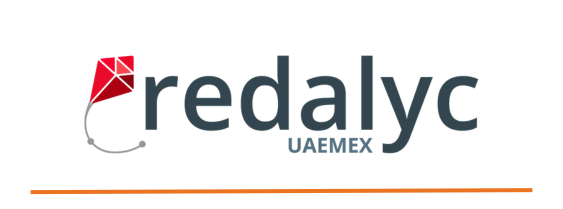Design and Implementation of a DC/Dc Boost Converter with PID Control for Regenerative Braking Application
DOI:
https://doi.org/10.26439/interfases2024.n020.7398Keywords:
DC/DC boost converter, PID control, regenerative braking, prototypingAbstract
This article presents the design and implementation of a 12 V to 40,99 V DC/DC boost converter using PID control, with the aim of providing an efficient solution for harnessing recovered energy in a regenerative braking system. In the first stage, the uncontrolled circuit was designed using Simulink and PSIM software. Subsequently, a prototype of the controlled circuit was implemented using PID control to correct the output signal. Once the prototype’s functionality was validated in the Proteus simulator, the physical implementation was carried out. This phase included the design of the tracks in Eagle software, the modeling of the board in Autodesk Fusion, and the manual fabrication of the circuit. The use of PID control allowed for an average output voltage of 40,99 V, a similar RMS value, and a peak-to-peak ripple voltage of 2,40 V. Although the maximum estimated in the simulations was not reached, the results confirm the proper operation of the converter. Additionally, potential improvements were identified to optimize the circuit’s performance, such as adjustments in capacitance or inductance, in order to reduce current and voltage spikes.
Downloads
References
Abril, C. S., Arias, R. E., Guerrero, L. M., & González, L. G. (2016). Diseño de un convertidor elevador, para aplicaciones de energías renovables en instalaciones aisladas. Maskana, 5, 99–108. https://publicaciones.ucuenca.edu.ec/ojs/index.php/maskana/article/view/578
Cardona Herrera, S., & Ospina Hurtado, S. (2015). Construcción de módulo convertidor CC-CC elevador, para prácticas en el laboratorio del programa ingeniería mecatrónica [Tesis de bachillerato, Universidad Tecnológica de Pereira]. Repositorio Institucional de la Universidad Tecnológica de Pereira. https://repositorio.utp.edu.co/entities/publication/32f0b289-70af-48d5-9ada-b11b41cc9c58
Durango, J. J. M., Ordoñez, J. J., & Machado, L. F. M. (2017). Design and construction of a boost type dc/dc converter with adjustable PWM. Scientia et Technica, 22(1), 9-14. https://doi.org/10.22517/23447214.12811
Flores Ordeñana, J. A. (2018). Diseño de convertidores DC-DC tipo boost con controladores fraccionales para arreglos de paneles fotovoltaicos [Tesis de maestría, Universidad Politécnica de Puebla]. Repositorio de la Universidad Politécnica de Puebla. http://repositorio.uppuebla.edu.mx:8080/xmlui/handle/123456789/371
Meza, H. A., García, J. L. M., & Mora, S. B. S. (2017). Estrategias de control MPPT aplicada en un convertidor DC/DC tipo boost para sistemas fotovoltaicos. Revista Colombiana de Tecnologías de Avanzada (RCTA), 2(30), 102-108. http://repositorio.ufps.edu.co/handle/ufps/1019
Narciso Vera, W. M. (2022). Desarrollo de un sistema de freno regenerativo para el aumento de autonomía de la moto eléctrica modelo Sakura M500 [Tesis de bachillerato, Universidad Nacional de Trujillo]. Red de Repositorios Latinoamericanos. https://repositorioslatinoamericanos.uchile.cl/handle/2250/4748204
Nise, N. S. (2014). Control systems engineering (7.a ed.). John Wiley & Sons.
O’Keeffe, D., Riverso, S., Albiol-Tendillo, L., & Lightbodyt, G. (2017). Distributed hierarchical droop control of boost converters in DC microgrids [Presentación de escrito]. 28th Irish Signals and Systems Conference (ISSC), Killarney, Irlanda (pp. 1-6). IEEE. doi: 10.1109/ISSC.2017.7983615.
Palacio Garcés, V. A. (2014). Convertidores DC-DC para aprovechamiento de frenado regenerativo en sistemas de tracción alimentados con corriente directa [Tesis de grado, Universidad Pontificia Bolivariana]. Repositorio Universidad Pontificia Bolivariana. https://repository.upb.edu.co/handle/20.500.11912/1904
Rashid, M. H. (2015). Electrónica de potencia (4.a ed.). Pearson.
Razmjooy, N. (2024). PID control [Archivo en MATLAB, versión 1.1.0.0]. MATLAB Central File Exchange. https://www.mathworks.com/matlabcentral/fileexchange/48060-pid-control
Roche Vacacela, E. M., & Terán Torres, S. F. (2011). Diseño y construcción de un conversor DC/DC boost mediante lógica difusa [Tesis de bachillerato, Escuela Politécnica Nacional de Ecuador]. Repositorio digital Escuela Politécnica Nacional. https://bibdigital.epn.edu.ec/handle/15000/4349
Rodríguez, C. A. D., Torres, W. N. R., & Rodríguez, G. E. G. (2024). Diseño e implementación de un convertidor boost regulado empleando una estrategia de control PI. Scientia et Technica, 29(02), 73-88. https://doi.org/10.22517/23447214.25452
Ruz-Canul, M. A., Djilali, L., Ruz-Hernandez, J. A., & Sanchez-Camperos, E. N. (2022). Control neuronal por modos deslizantes para el frenado regenerativo de vehículos. Journal Innovative Design, 6(15), 10-18. https://www.ecorfan.org/taiwan/research_journals/Diseno_Innovativo/vol6num15/Journal_Innovative_Design_V6_N15_2.pdf
Sanchez Rosado, R. M. (2015). Análisis comparativo entre controladores basados en lógica difusa y control PID clásico, aplicados a sistemas de control de velocidad de motores DC sin escobillas. [Tesis de maestría, Escuela Superior Politécnica del Litoral]. Repositorio Dspace. https://www.dspace.espol.edu.ec/xmlui/handle/123456789/46967
Downloads
Published
Issue
Section
License
Authors who publish with this journal agree to the following terms:
Authors retain copyright and grant the journal right of first publication with the work simultaneously licensed under an Attribution 4.0 International (CC BY 4.0) License. that allows others to share the work with an acknowledgement of the work's authorship and initial publication in this journal.
Authors are able to enter into separate, additional contractual arrangements for the non-exclusive distribution of the journal's published version of the work (e.g., post it to an institutional repository or publish it in a book), with an acknowledgement of its initial publication in this journal.
Authors are permitted and encouraged to post their work online (e.g., in institutional repositories or on their website) prior to and during the submission process, as it can lead to productive exchanges, as well as earlier and greater citation of published work (See The Effect of Open Access).
Last updated 03/05/21






